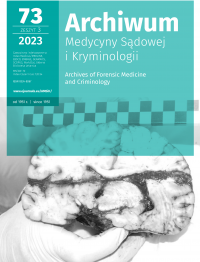Signatures as an object of autoforgery (self-forgery)
Signatures as an object of autoforgery (self-forgery)
Author(s): Anna KoziczakSubject(s): Criminology, Health and medicine and law
Published by: Wydawnictwo Uniwersytetu Jagiellońskiego
Keywords: handwriting identification; disguised handwriting; disguised signatures, autoforgery; self-forgery;
Summary/Abstract: The study presents the results of research aimed at isolating the graphic features most frequently and least frequently modified by pe- ople committing autoforgery (self-forgery) of signatures in situations where the appearance of their natural signatures is not known to the recipient. The research covered a total of over 12,000 signatures from 200 individuals. The most successful attempts at autoforgery of legible and illegible signatures of each test subject were selected for the final evaluation. It was found that autoforgery changes are most often focused on the most striking features of the signatures, such as the structure of letters in the initial part of the signature, size, readability, impulse, and slope. Secondary features, more difficult to notice or those whose existence the writers are not aware of (such as the presence or absence of additions, the arrangement of letters in relation to each other, the shape and direction of signa- ture lines, the format of legible signatures) are usually omitted in autoforgery activities. Detecting autoforgery can be a big challenge for experts, because in practice, any significant differences between the questioned signature and comparative signatures are often mistakenly considered to be the result of forgery. Therefore, in order to detect autoforgery, it is necessary to analyze the structure of easily noticeable features that most influence the so-called pictorial effect of the signature in combination with the unattractive fe- atures that remain unchanged in most cases of autoforgery. The more characteristic the latter are, the more their consistency in the questioned and comparative material proves self-forgery, regardless of the differences in the primary features. In the case of a forged signature, the opposite is true: the most easily noticeable features of the signature are imitated by the forger, and the differences occur mainly in secondary features.
Journal: Archiwum Medycyny Sądowej i Kryminologii
- Issue Year: 73/2023
- Issue No: 3
- Page Range: 257-271
- Page Count: 15
- Language: English, Polish

